Abstract
The pedicel of tomato fruit (Lycopersicon esculentum Mill., cv `Rutgers') of different developmental stages from immature-green (IG) to red was injected on the vine with 7 microcuries [14C(U)]sucrose and harvested after 18 hours. Cell walls were isolated from outer pericarp and further fractionated yielding ionically associated pectin, covalently bound pectin, hemicellulosic fraction I, hemicellulosic fraction II, and cellulosic fraction II. The dry weight of the total cell wall and of each cell wall fraction per gram fresh weight of pericarp tissue decreased after the mature-green (MG) stage of development. Incorporation of radiolabeled sugars into each fraction decreased from the IG to MG3 (locules jellied but still green) stage. Incorporation in all fractions increased from MG3 to breaker and turning (T) and then decreased from T to red. Data indicate that cell wall synthesis continues throughout ripening and increases transiently from MG4 (locules jellied and yellow to pink in color) to T, corresponding to the peak in respiration and ethylene synthesis during the climacteric. Synthesis continued at a time when total cell wall fraction dry weight decreased indicating the occurrence of cell wall turnover. Synthesis and insertion of a modified polymer with removal of other polymers may produce a less rigid cell wall and allow softening of the tissue integrity during ripening.
Full text
PDF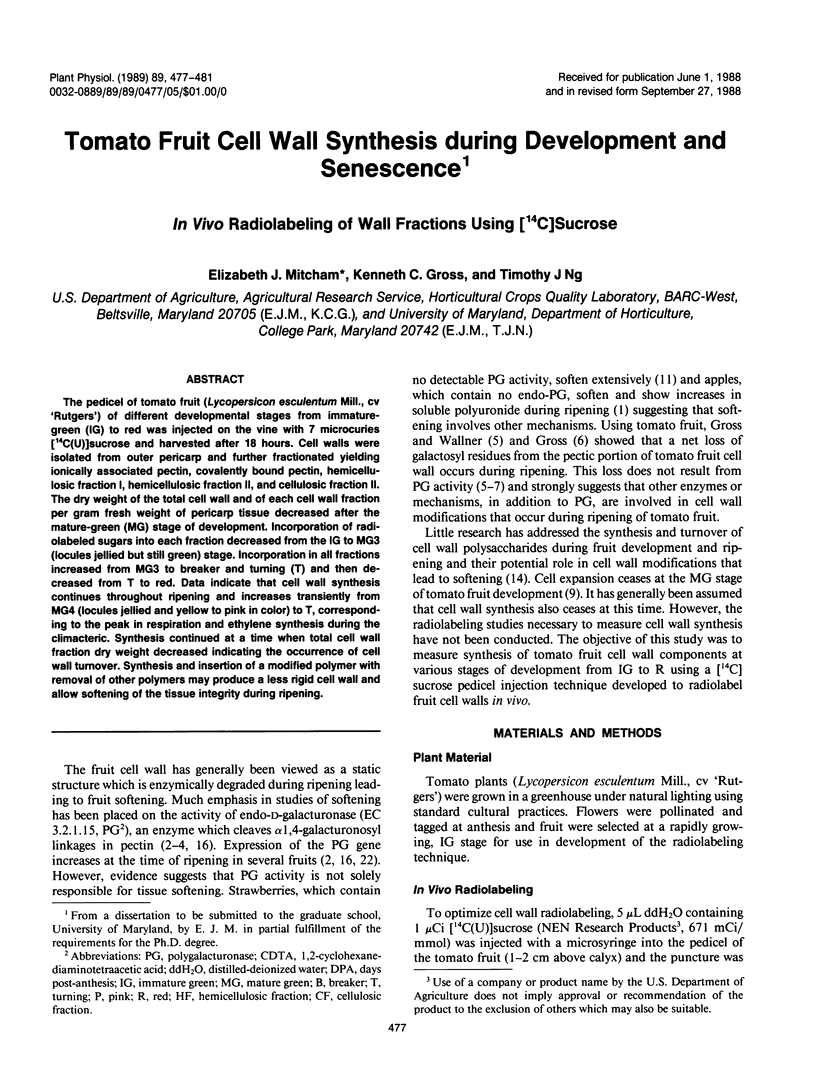
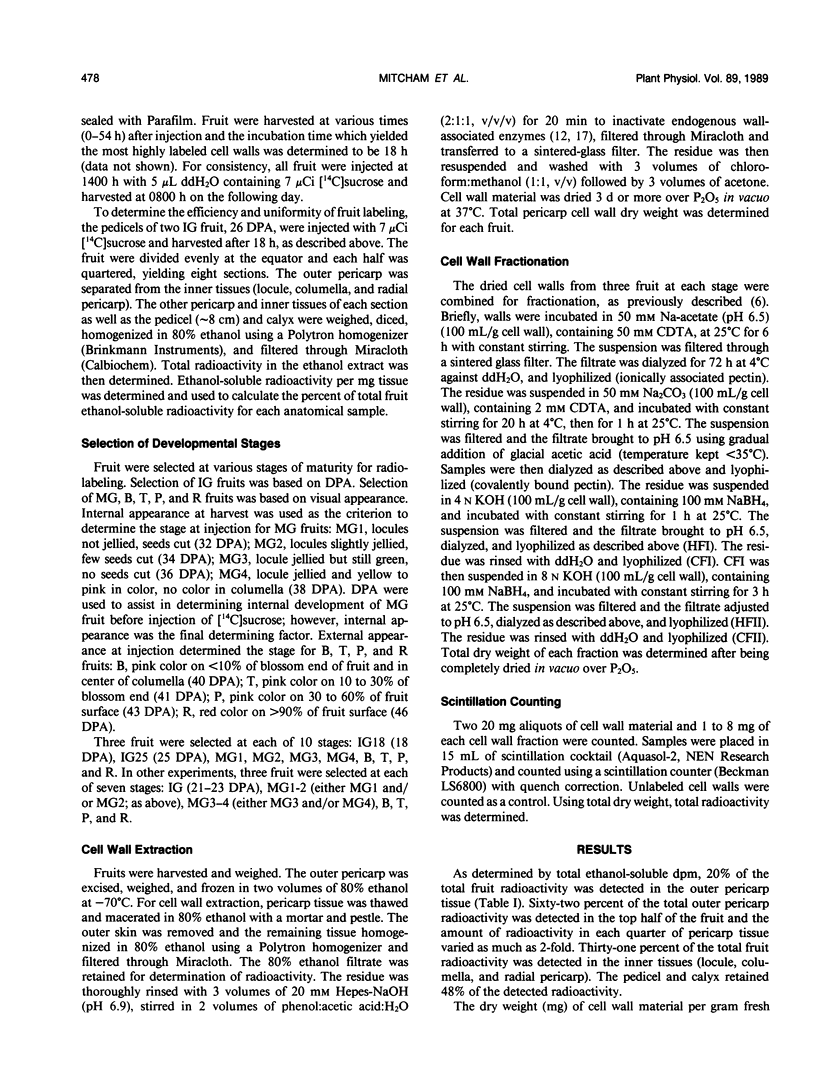
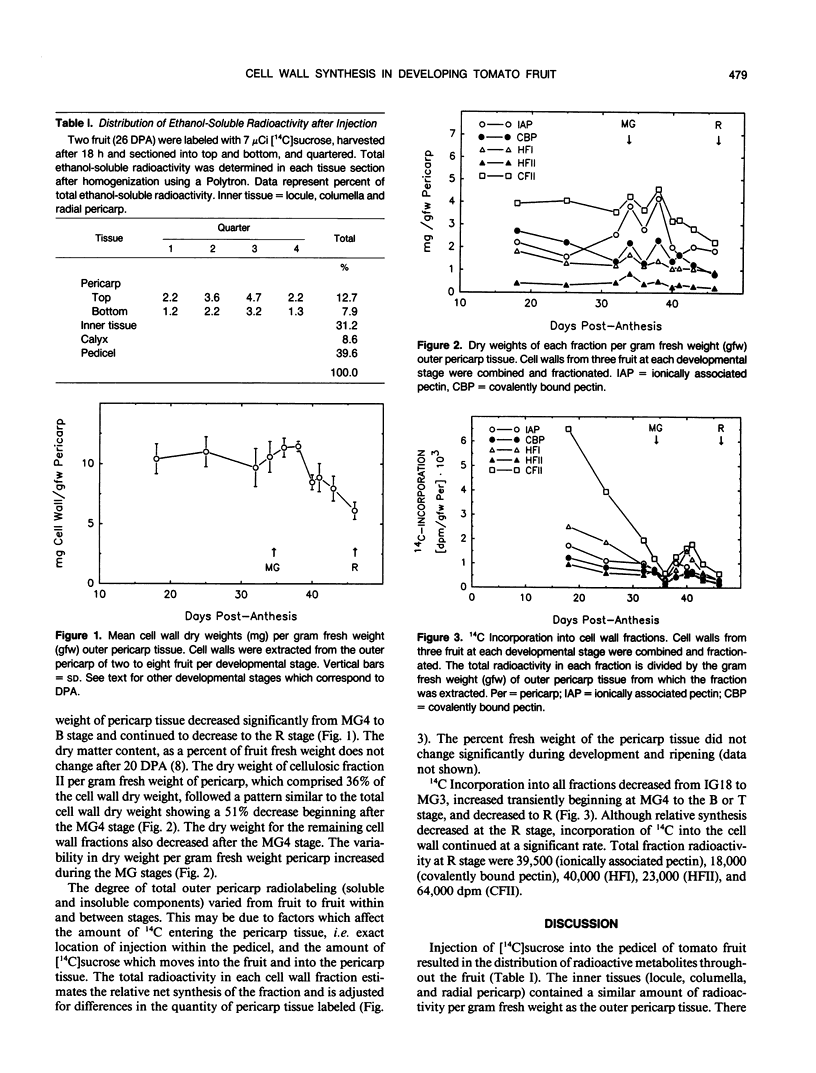
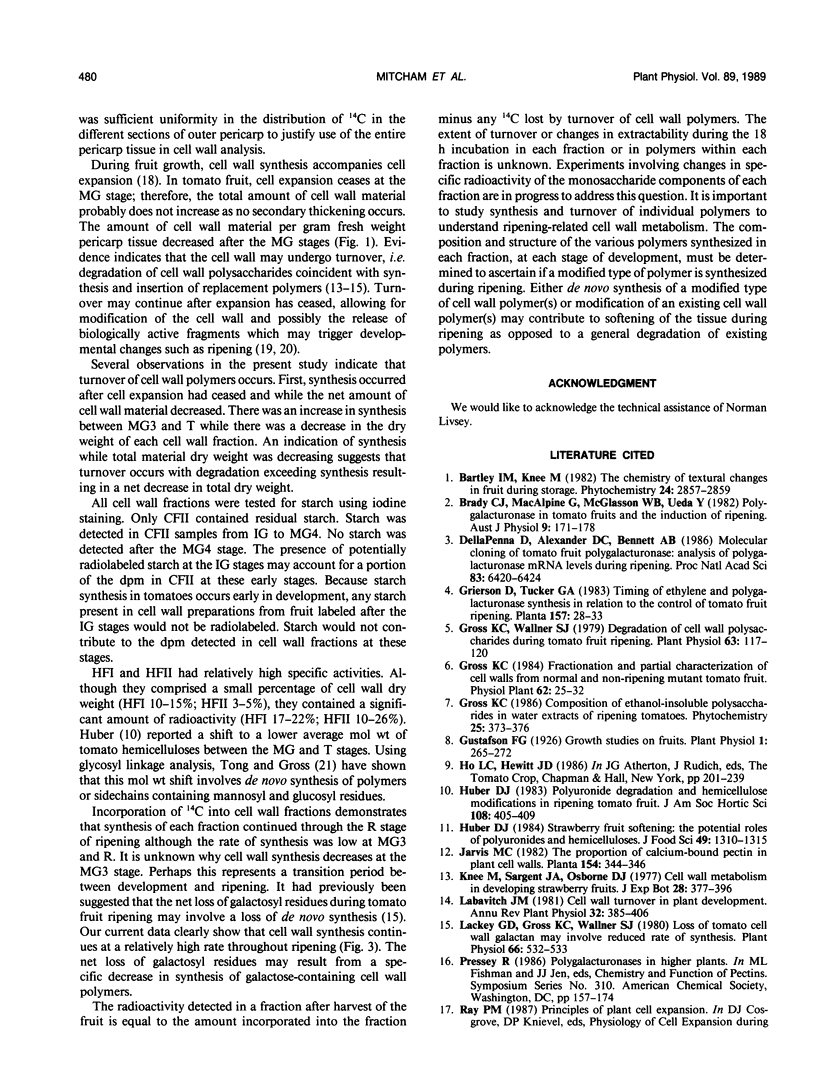
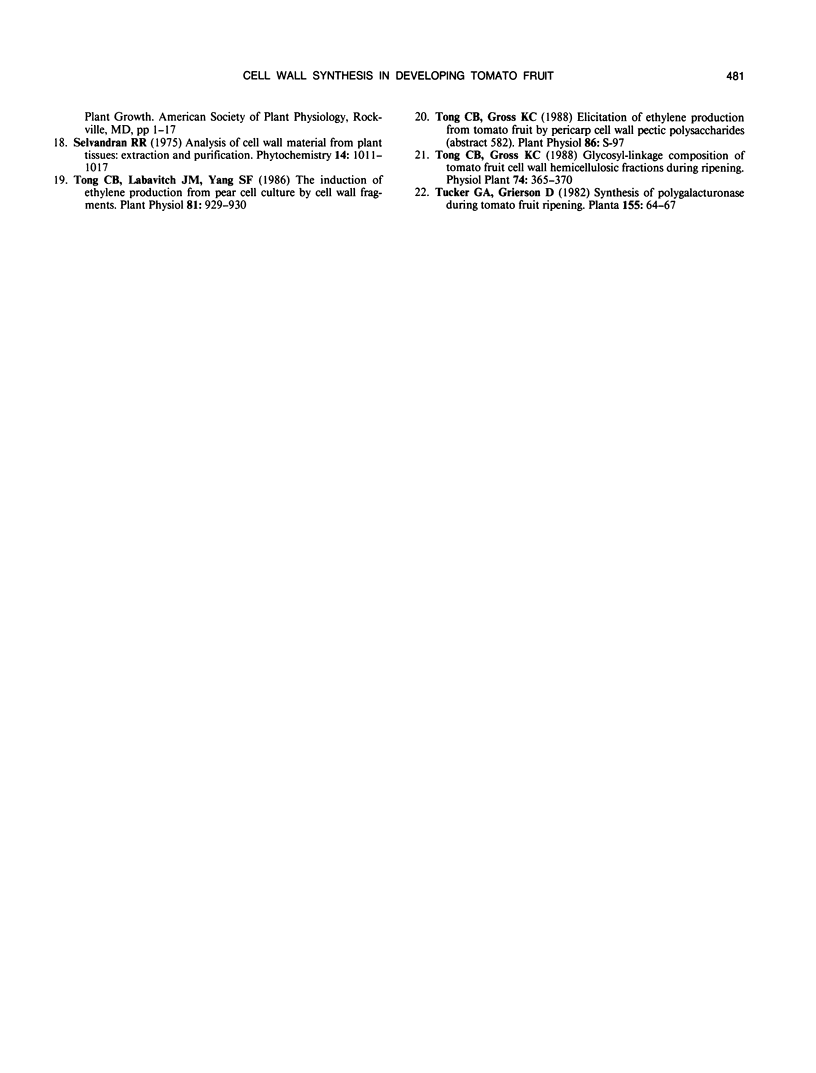
Selected References
These references are in PubMed. This may not be the complete list of references from this article.
- Dellapenna D., Alexander D. C., Bennett A. B. Molecular cloning of tomato fruit polygalacturonase: Analysis of polygalacturonase mRNA levels during ripening. Proc Natl Acad Sci U S A. 1986 Sep;83(17):6420–6424. doi: 10.1073/pnas.83.17.6420. [DOI] [PMC free article] [PubMed] [Google Scholar]
- Gross K. C., Wallner S. J. Degradation of Cell Wall Polysaccharides during Tomato Fruit Ripening. Plant Physiol. 1979 Jan;63(1):117–120. doi: 10.1104/pp.63.1.117. [DOI] [PMC free article] [PubMed] [Google Scholar]
- Gustafson F. G. GROWTH STUDIES ON FRUITS. Plant Physiol. 1926 Jul;1(3):265–272. doi: 10.1104/pp.1.3.265. [DOI] [PMC free article] [PubMed] [Google Scholar]
- Lackey G. D., Gross K. C., Wallner S. J. Loss of tomato cell wall galactan may involve reduced rate of synthesis. Plant Physiol. 1980 Sep;66(3):532–533. doi: 10.1104/pp.66.3.532. [DOI] [PMC free article] [PubMed] [Google Scholar]
- Tong C. B., Labavitch J. M., Yang S. F. The induction of ethylene production from pear cell culture by cell wall fragments. Plant Physiol. 1986 Jul;81(3):929–930. doi: 10.1104/pp.81.3.929. [DOI] [PMC free article] [PubMed] [Google Scholar]


